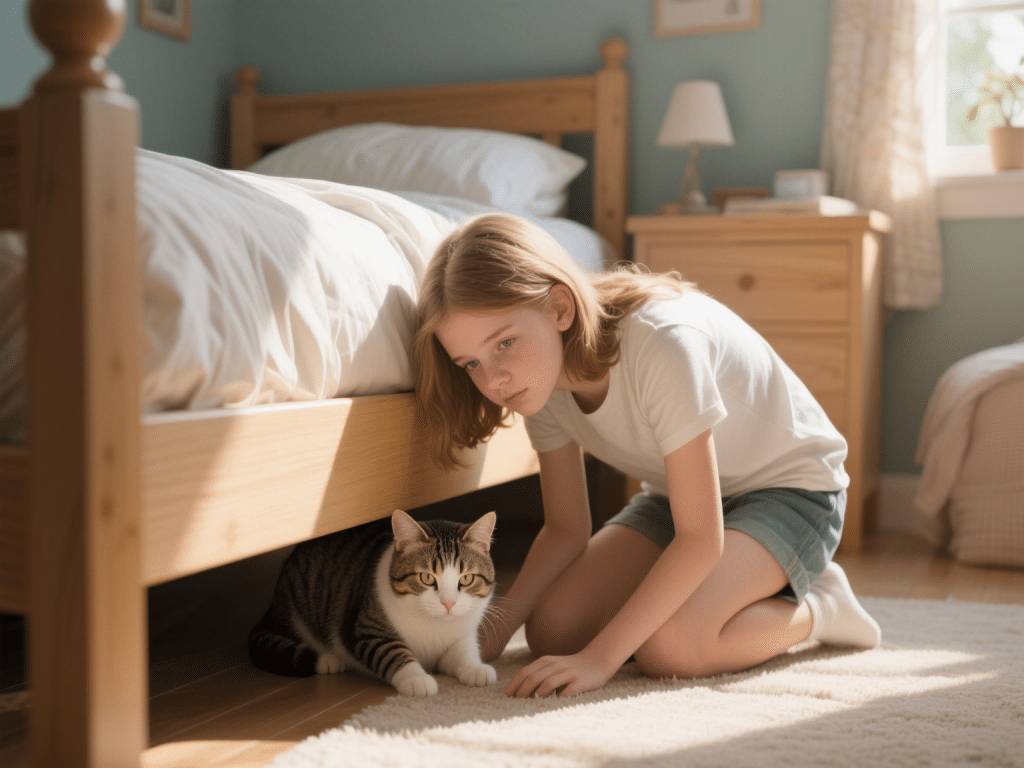
Cats instinctively seek hidden, enclosed spaces to feel safe. However, prolonged or excessive hiding can signal stress, illness, or environmental discomfort. As a feline welfare specialist and 12-year cat guardian, I’ve decoded countless hiding behaviors. Let’s explore why your cat retreats and how you can encourage them back to the spotlight.
1. Common Reasons Cats Hide
Stress & Anxiety: New home, visitors, or household changes.
Illness or Pain: Cats conceal vulnerability; hiding can indicate injury or disease.
Temperature Regulation: Seeking warmth or coolness in specific spots.
Natural Instincts: Predatory and prey instincts drive them to seek cover.
2. Identify Worrisome Hiding
Consider veterinary consultation if hiding is:
Sudden or Extreme: Your usually social cat vanishes for days.
Accompanied by Other Signs: Loss of appetite, lethargy, or vocal changes.
In Inaccessible Spots: Behind appliances or inside vents—potential danger.
3. Creating a Cat-Friendly Environment
Safe Retreats: Provide covered beds, cardboard boxes, or igloos in quiet corners.
Vertical Territory: Install shelves or cat trees so your cat can survey from height.
Consistent Routine: Feeding, play, and interaction at regular times builds trust.
4. Gentle Encouragement
Interactive Toys: Use wand toys near hiding spots to coax movement.
Food Lures: Warm wet food or treats placed gradually closer to open areas.
Calming Sounds: Soft talking or classical music can reassure.
5. Pheromone & Nutritional Support
Feliway® Diffusers: Mimic feline facial pheromones to reduce stress.
Calming Supplements: L-theanine or tryptophan formulas (vet-approved) ease anxiety.
Hiding is a natural feline behavior, but persistent seclusion often signals a need for adjustment or medical care. By observing patterns, enriching your cat’s environment, and providing gentle encouragement, you’ll help your cat emerge from the shadows—happy, confident, and ready to engage.










